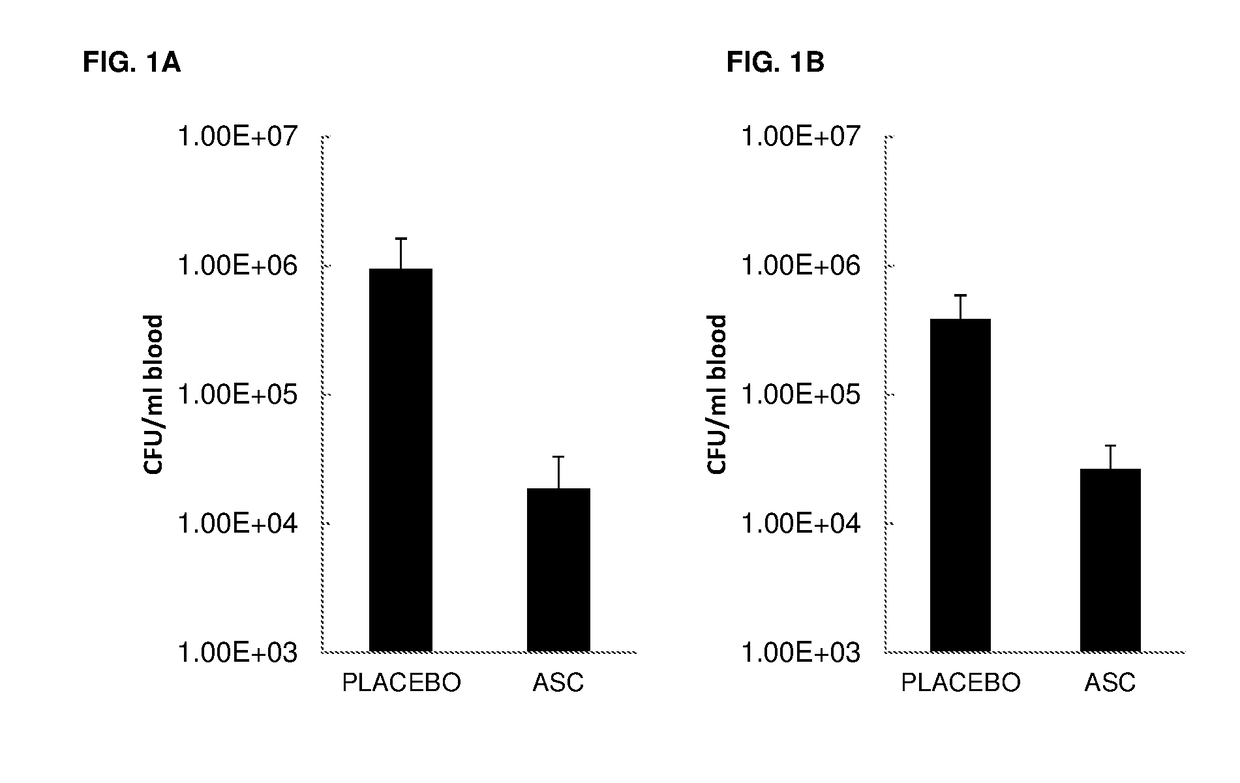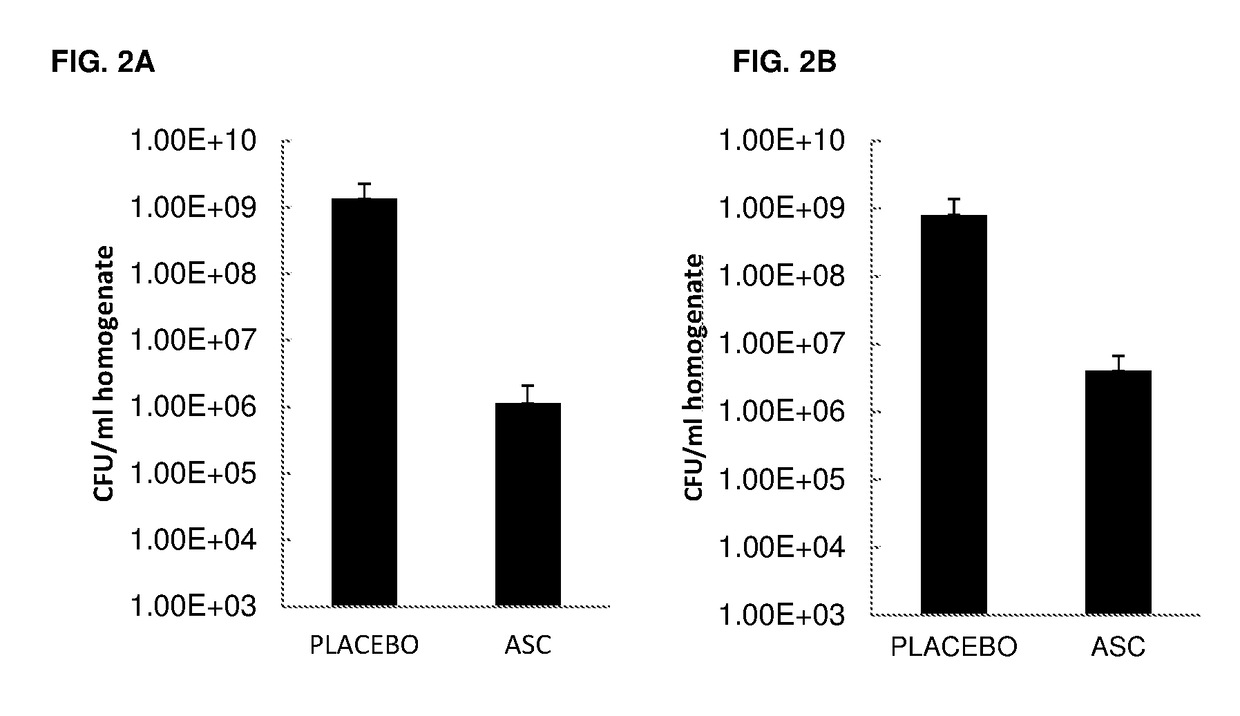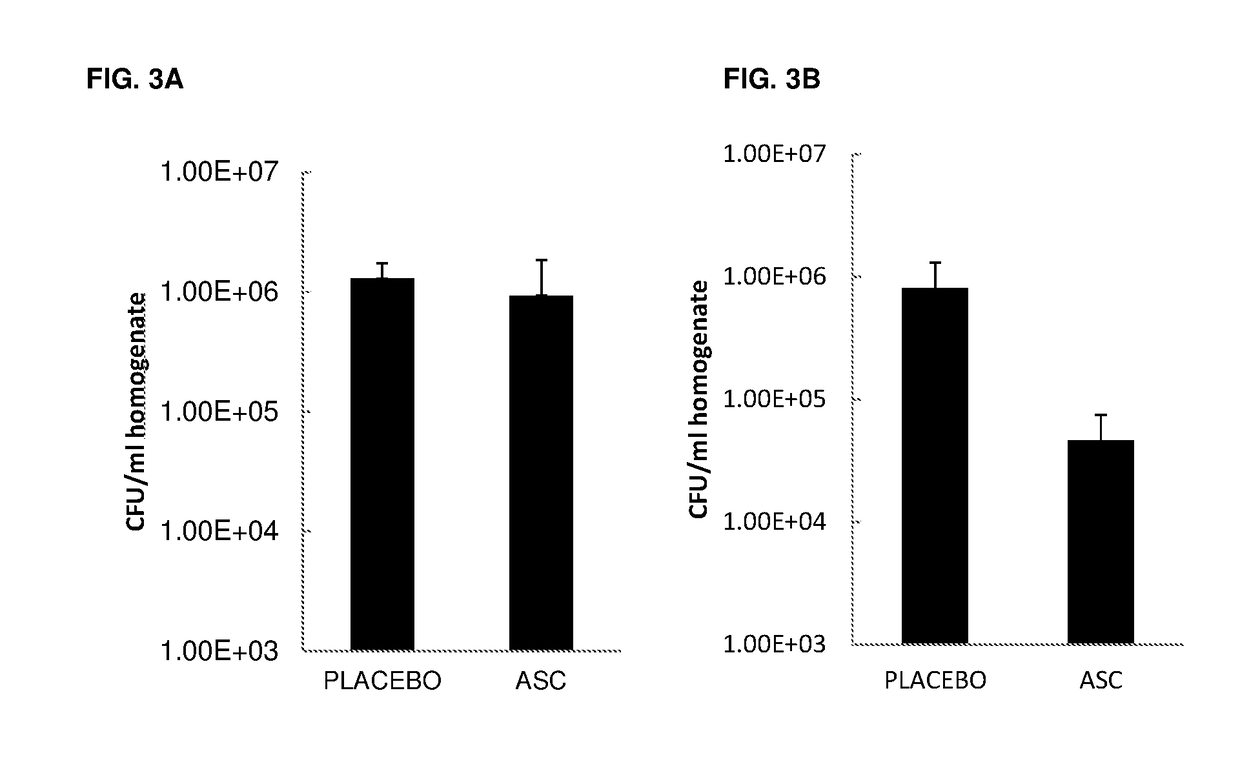Mesenchymal stromal cells for treating sepsis
a technology of mesenchymal stromal cells and sepsis, which is applied in the direction of antibacterial agents, spray delivery, and aerosol delivery, etc., can solve the problems of organ dysfunction or organ failure, redness, swelling, pain, and damage to the vasculature as well as the internal organs, and achieve the effect of reducing the blood flow to the limbs and vital organs, and reducing the blood flow
- Summary
- Abstract
- Description
- Claims
- Application Information
AI Technical Summary
Benefits of technology
Problems solved by technology
Method used
Image
Examples
example 1
Effect of ASC Treatment on Pneumonia-Associated Sepsis
[0135]Objective: To determine the effect of ASCs administered at 6 h post infection on the progression and dissemination of bacteria, and on the levels of pro-inflammatory cytokines in the lung.
[0136]Mice:[0137]Eight to twelve-week old, specific pathogen-free female C57BL / 6 mice[0138]Mice were randomized and housed for 7 days prior to the experiment for acclimatization[0139]Animals in experiment were observed twice a day. If extremely ill, more frequent (6×) observation was required and essential in accordance with the Animal Ethical Committee
[0140]Pneumonia:
[0141]Gram-negative pneumonia was induced by intranasal instillation of live Klebsiella pneumoniae serotype 2 (1×104 CFU; ATCC 43816; American Type Culture Collection). Bacteria were cultured in
[0142]Tryptic Soy Broth (TSB) medium and blood agar (BA) plates.
[0143]Day −1: Start culture
[0144]One bead of −80° C. Klebsiella pneumoniae stock were placed in 50 ml TSB medium and gro...
example 2
[0164]A clinical trial is conducted in severe pneumonia patients with severe sepsis or septic shock. Patients are enrolled within 24 hours of diagnosis of sepsis.
[0165]Approximately half of patients enrolled in the study receive treatment with a medicinal product consisting of a suspension of donor-derived (allogeneic) expanded adipose stromal cells (eASCs) in Ringer's lactate solution. The other half receive a placebo consisting of a suspension of Ringer's lactate solution. Patients in the treatment group receive a single dose of 4 million cells / kg patient body weight of the medicinal product. Patients in the placebo group receive a single dose of the placebo. In both cases administration is by means of intravenous infusion.
[0166]The medicinal product is a cell suspension in sterile buffer solution containing adipose-derived stromal cells (eASCs) of allogeneic origin in disposable vials, obtained through lipoaspiration from healthy individuals and expanded in vitro. The medicinal p...
PUM
 Login to View More
Login to View More Abstract
Description
Claims
Application Information
 Login to View More
Login to View More - R&D
- Intellectual Property
- Life Sciences
- Materials
- Tech Scout
- Unparalleled Data Quality
- Higher Quality Content
- 60% Fewer Hallucinations
Browse by: Latest US Patents, China's latest patents, Technical Efficacy Thesaurus, Application Domain, Technology Topic, Popular Technical Reports.
© 2025 PatSnap. All rights reserved.Legal|Privacy policy|Modern Slavery Act Transparency Statement|Sitemap|About US| Contact US: help@patsnap.com



